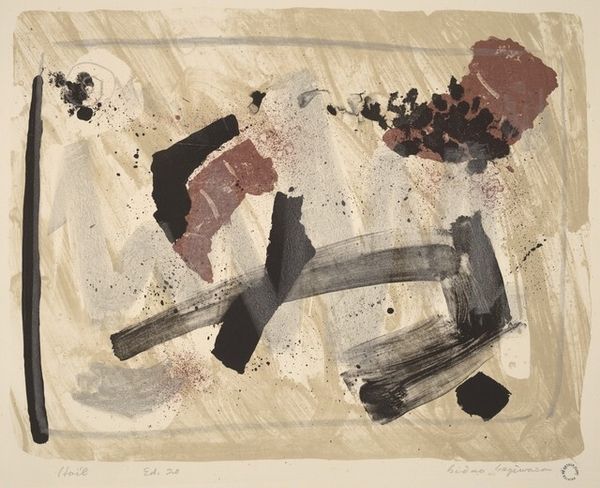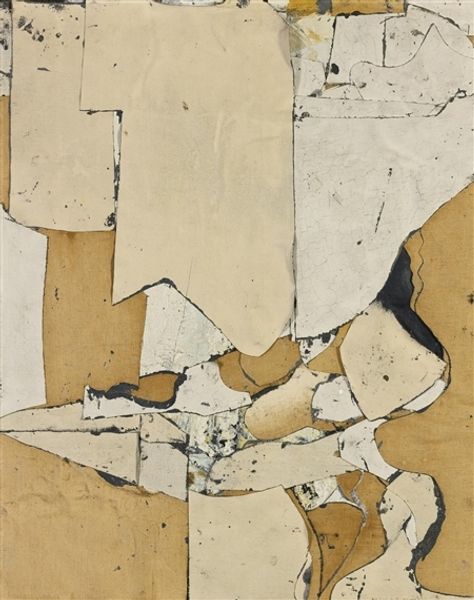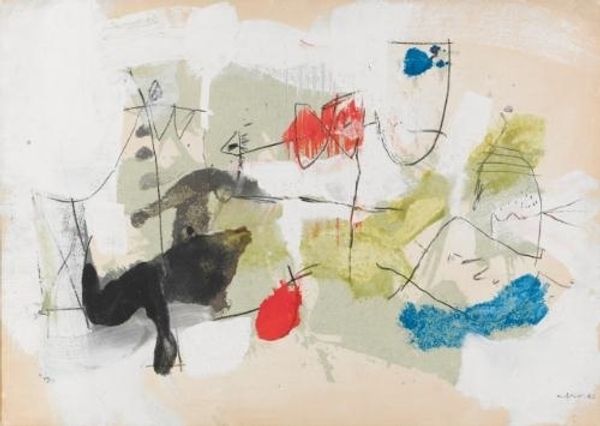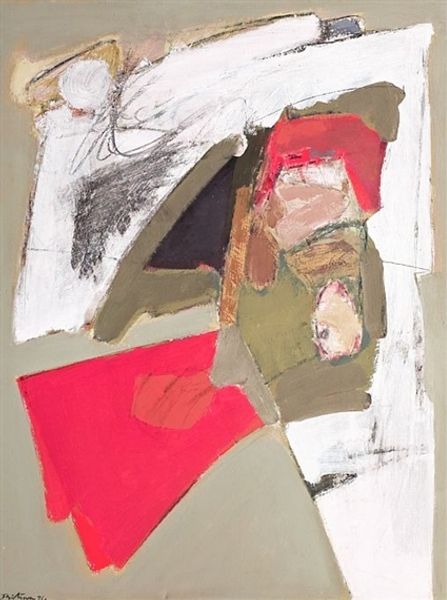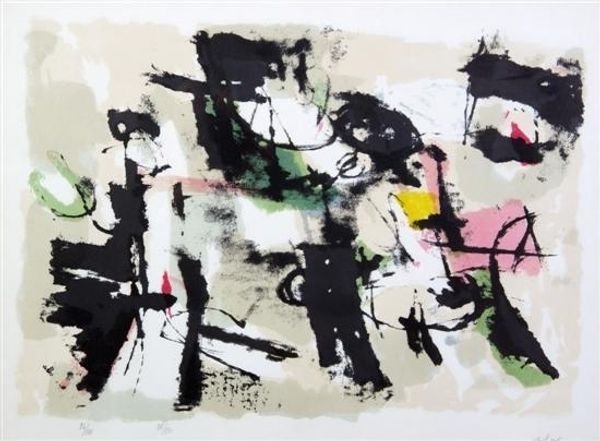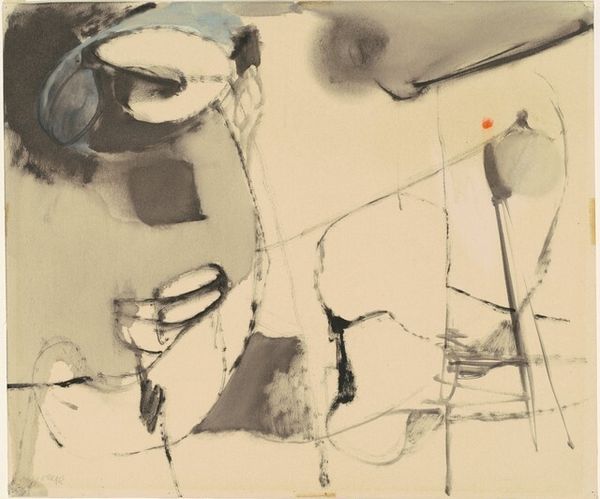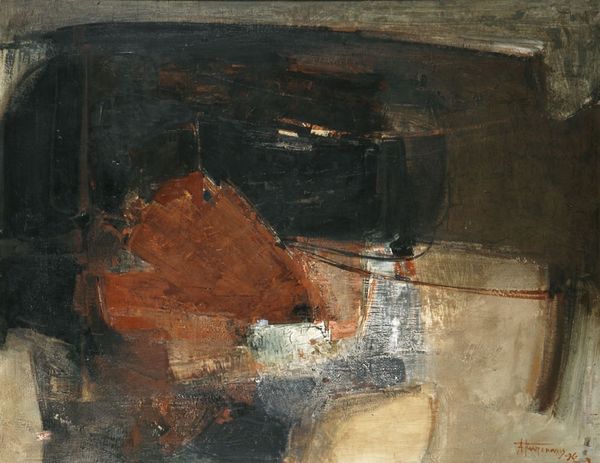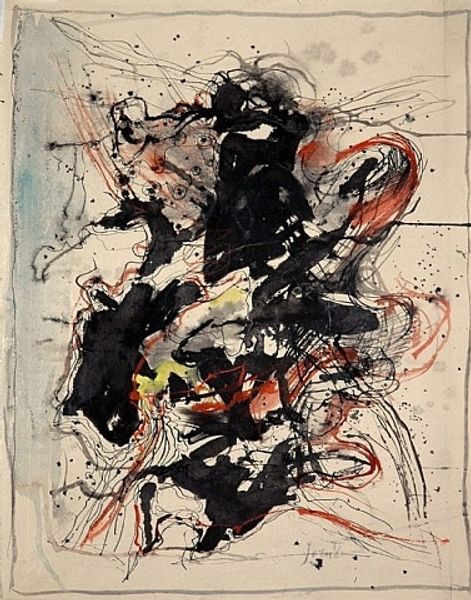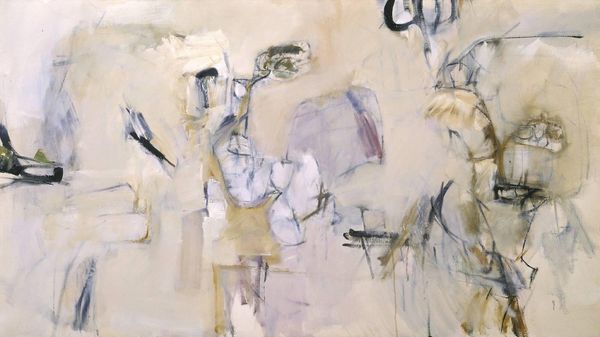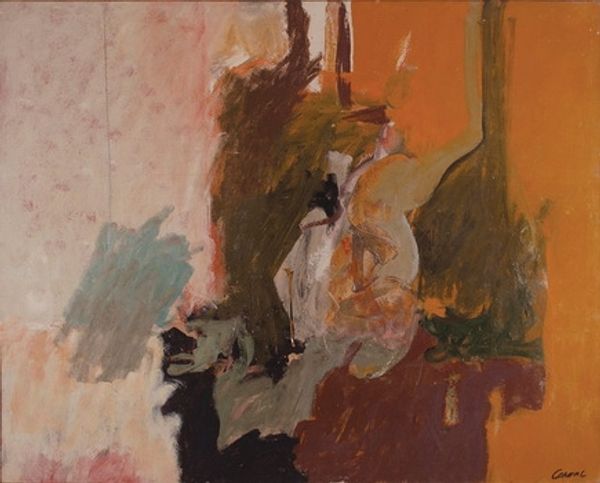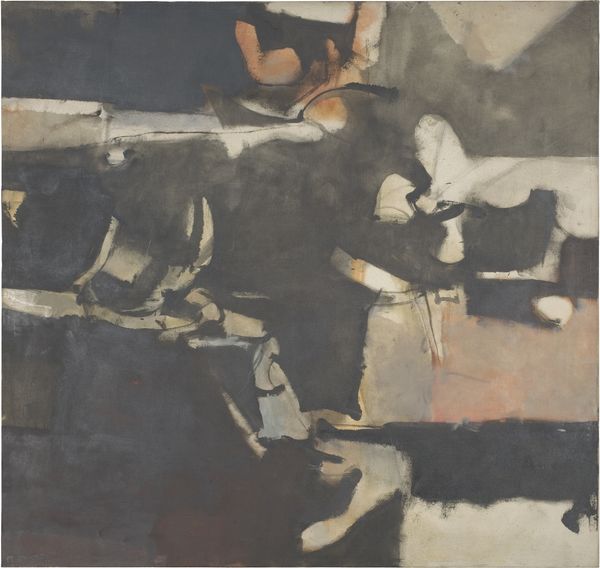
mixed-media, matter-painting, painting
#
mixed-media
#
abstract painting
#
matter-painting
#
painting
#
oil painting
#
art-informel
#
abstraction
Copyright: Afro,Fair Use
Curator: We're now standing before "Nero, verde, azzurro" by Afro, created in 1960. It’s a compelling example of the artist's work in the Art Informel movement, combining oil paint and mixed media to explore abstraction. Editor: My first impression is one of controlled chaos. It's as if fragments of color and form are barely contained on the canvas, hinting at some deeper, underlying structure. What strikes me is the materiality; I can almost feel the texture of the paint. Curator: Absolutely. Afro, born Afro Basaldella, operated in a post-war context where traditional artistic values were being questioned. The Art Informel movement itself represented a rejection of geometric abstraction in favor of a more intuitive and process-oriented approach to art-making. There's a real push towards the raw and authentic. Editor: I find myself wondering about the choices behind those heavy blacks contrasted with the lighter blues and greens. The title—"Black, Green, Blue"—feels almost too simple for the complexity we're seeing. Were these colors readily available? Did their specific pigments influence his work? Curator: That's a key point. The palette does speak to the broader social and cultural anxieties of the era. The darkness could be a reflection of post-war trauma and uncertainty, while the glimpses of brighter colors might offer a glimmer of hope or renewal. Editor: It is true that the application itself looks pretty physical; each layer of paint, each stroke and spatter contributes to the overall texture, highlighting the artist's hand and the inherent qualities of his selected materials. I'd love to see if any archival studies could shed light on the brand and manufacturer used, further showing Afro’s dedication. Curator: I think, beyond the immediate aesthetic appeal, this piece reflects a crucial moment in art history—a breaking away from traditional modes of representation and a courageous exploration of pure form and color. It prompts us to question the very definition of art and the role of the artist. Editor: Exactly, seeing this reminds us that artworks can offer important information. It can reveal subtle yet invaluable hints that contextualize the period during its making and its subsequent impact and interpretations.
Comments
No comments
Be the first to comment and join the conversation on the ultimate creative platform.
